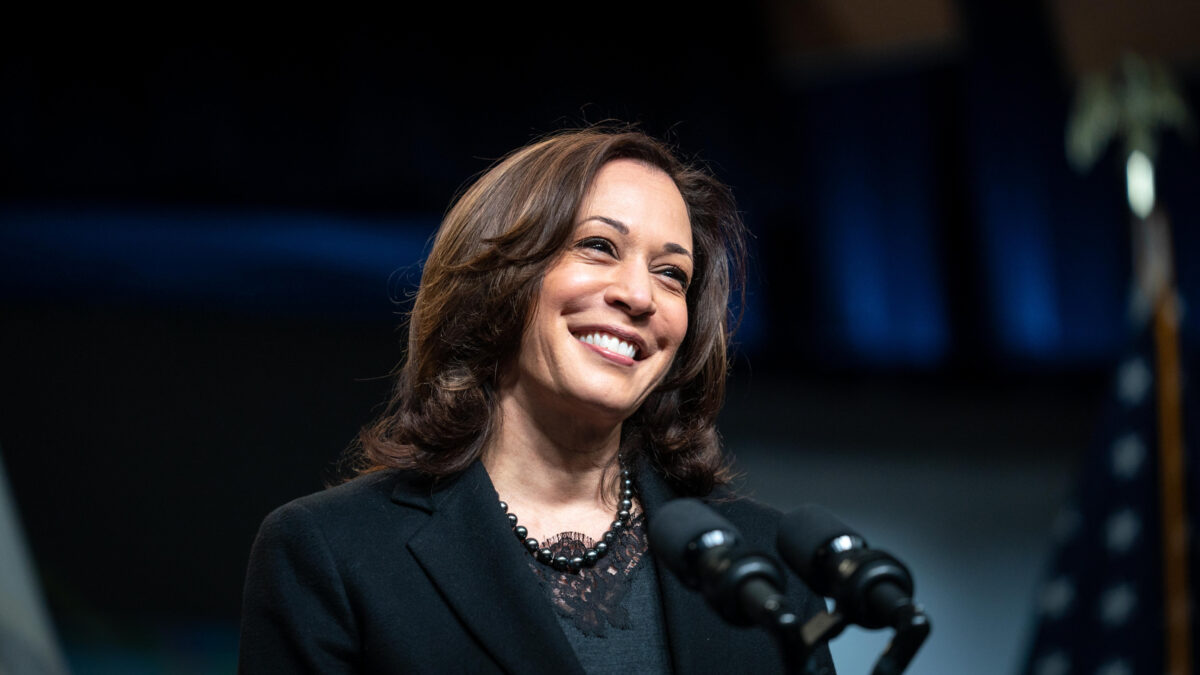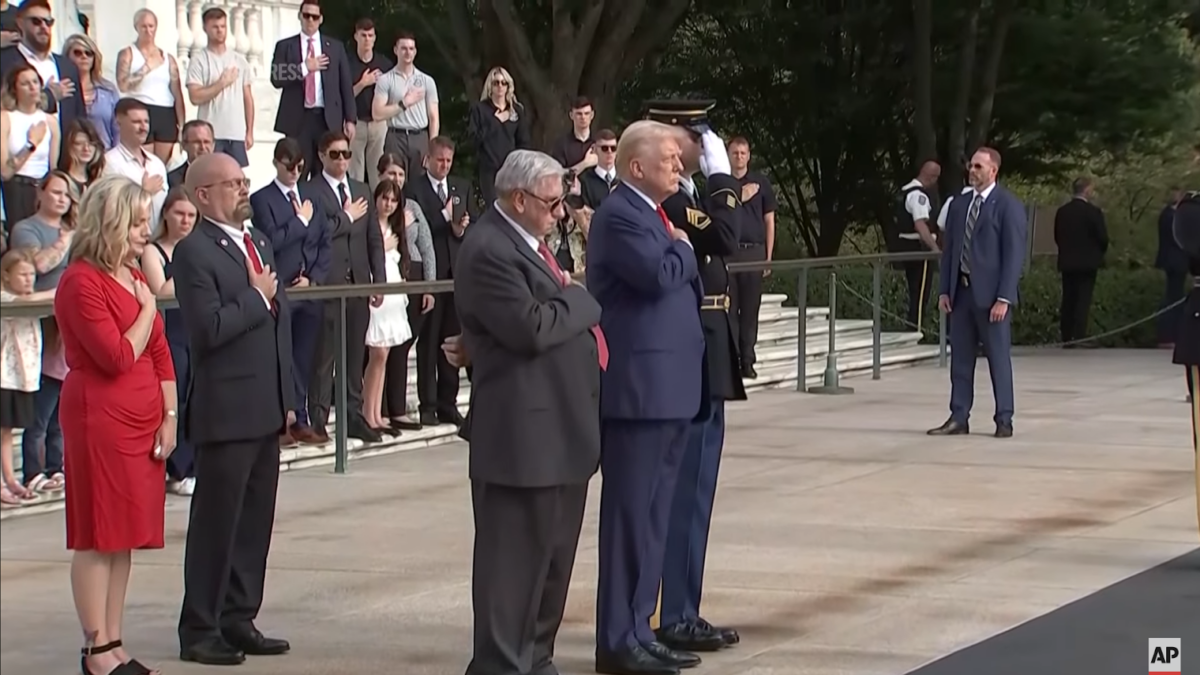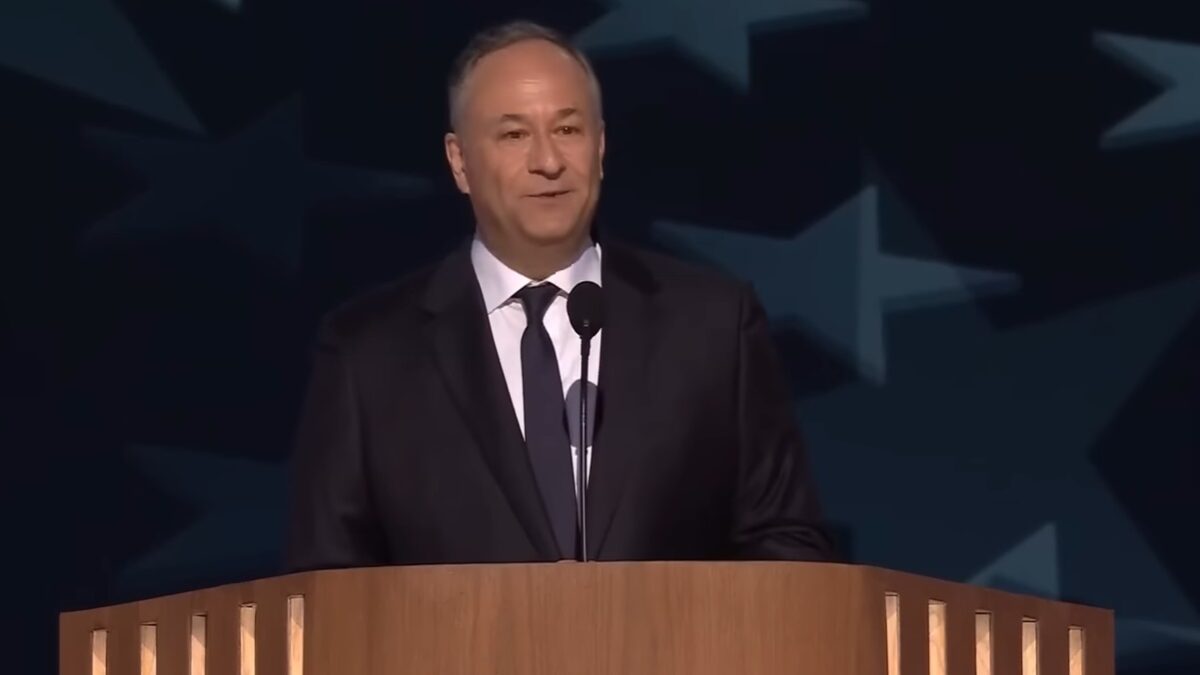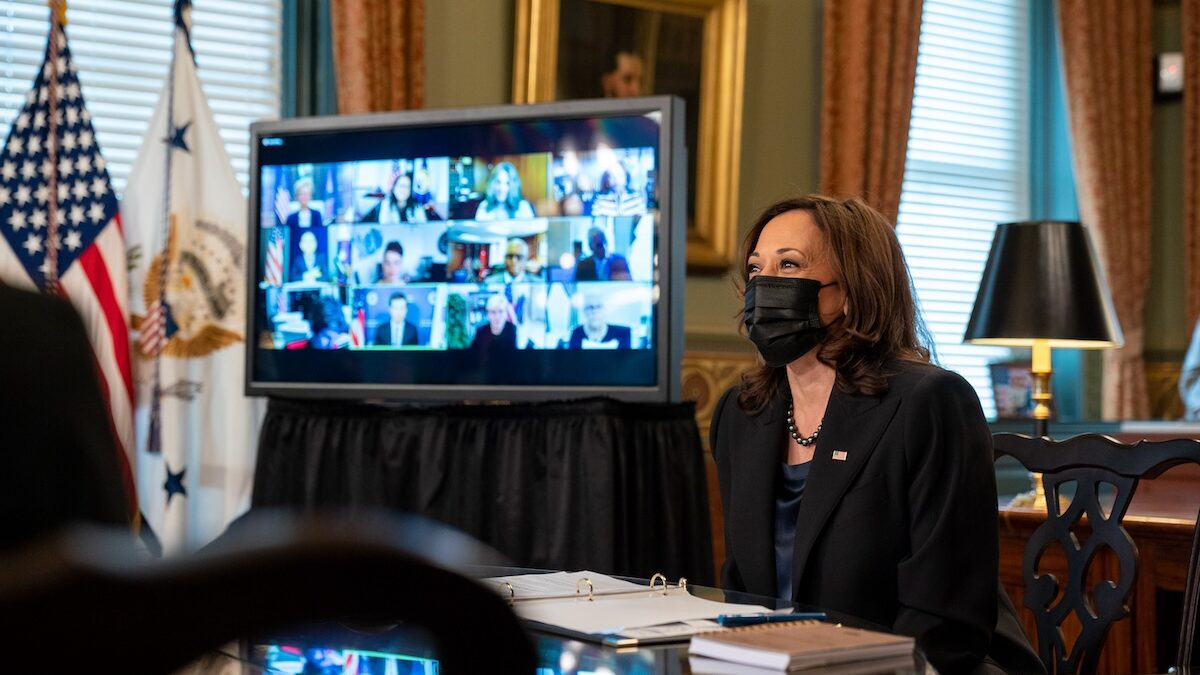The New York Times is taking its cues from President Joe Biden’s Department of the Interior.
After eight years of reporting on anything related to climate from the Obama administration as gospel, legacy media refused to cover the Trump team’s environmental initiatives with any sort of objectivity. Now the New York Times has returned to its PR-style coverage of friendly Democrats in the White House, taking explicit direction from administration officials.
A series of emails between the Times and Interior Secretary Deb Haaland’s office, obtained by The Federalist through a Freedom of Information Act (FOIA) request, illustrates the stark contrast between how the paper of “all the news that’s fit to print” approached Trump’s environmental efforts and his incumbent successors.
In an August email to Interior spokeswoman Melissa Schwartz, New York Times energy and environmental reporter Coral Davenport inquired about an appeal from the administration on leasing. The date of the message, Aug. 16, suggests Davenport was asking about the administration’s move to block a federal judge’s court order that overturned Biden’s ban on oil and gas leases on federal land.
“I’m trying to understand what exactly is new – the decision already required the administration to resume leasing,” Davenport wrote. “We will not do a story about the appeal – I’m just trying to understand what, beyond the appeal, is substantively new.”
Schwartz responded with a request that Davenport not write a story at all.
“More than happy for you to not write,” Schwartz wrote.
A review of Davenport’s author page shows no story written on the topic in the days following the exchange.
In another email one month later, Davenport apologized for asking questions related to the administration’s struggle to halt oil and gas exploration.
“Sorry we are so annoying w oil & gas lease Qs,” Davenport wrote. “Could you give a call? Interested in what else might be coming down the pike.”
A series of officials who worked on environmental issues under Trump, and whose post-government employment barred them from going on record, said the treatment was far different from how the New York Times, and Davenport in particular, approached the previous administration. According to the Washington Free Beacon, for example, the New York Times filed nearly four times as many FOIA requests with the Environmental Protection Agency during Trump’s first year than during President Barack Obama’s entire second term.
One official from Trump’s Interior Department said Davenport was “awful” to work with and was among the worst culprits of activist journalism, often giving the agency 30-minute deadlines, if that, to offer statements on complex issues. Other former Trump officials said such conduct from the Times was routine practice.
In another exchange with Schwartz, New York Times writer Elizabeth Williamson asked repeatedly for Haaland to sit for a profile interview. After Schwartz refused the request, Williamson pleaded and seemed to assure positive coverage.
“I do think it’ll look a bit odd since so many of her colleague[s] sent and friends have spoken w[ith] me,” Williamson wrote in May last year. “This sometimes happens on tough stories but rather a mystery here! … I still hope she will reconsider.”
The profile that eventually ran painted Haaland in a glowing light despite the secretary’s first-person absence. Williamson instead spoke to members of Haaland’s New Mexico tribe, the Laguna Pueblo. The piece was even met with Interior Department approval.
“I just wanted to say that I thought the profile turned out really lovely,” Schwartz wrote the morning it ran.
“The Secretary asked me to pass on her appreciation and gratitude that you traveled to speak with Pueblo women,” Schwartz added moments later.
When presented with the correspondence between the Times and the Interior Department, former members of the Trump administration were aghast considering the paper’s animosity toward the agency’s Republican predecessors.
Mandy Gunasekara, who was chief of staff for the Environmental Protection Agency under Trump, said the emails were “beyond frustrating.”
“We had reporters straight up tell us they wouldn’t come cover events because they would never write a positive story about the Trump administration,” Gunasekara told The Federalist. “And then there were other instances where they would just straight up spread false information.”
Gunasekara cited one example in 2019 so egregious the EPA released a press release to counter.
During a speech at the National Press Club, then-EPA Administrator Andrew Wheeler said, “The media does a disservice to the American public and sound policy-making by not informing the public of the progress this nation has made.”
A reporter from Yahoo News selectively cut the quote to change its meaning.
“‘The media does a disservice to the American public,’ by reporting on global warming, says EPA head Andrew Wheeler. Wants more positive coverage,” tweeted Yahoo’s Alexander Nazaryan. The post, still up, garnered more than 900 retweets including from the New York Times’s Lisa Friedman.
The New York Times is taking its cues from President Joe Biden’s Department of the Interior.
After eight years of reporting on anything related to climate from the Obama administration as gospel, legacy media refused to cover the Trump team’s environmental initiatives with any sort of objectivity. Now the New York Times has returned to its PR-style coverage of friendly Democrats in the White House, taking explicit direction from administration officials.
A series of emails between the Times and Interior Secretary Deb Haaland’s office, obtained by The Federalist through a Freedom of Information Act (FOIA) request, illustrates the stark contrast between how the paper of “all the news that’s fit to print” approached Trump’s environmental efforts and his incumbent successors.
In an August email to Interior spokeswoman Melissa Schwartz, New York Times energy and environmental reporter Coral Davenport inquired about an appeal from the administration on leasing. The date of the message, Aug. 16, suggests Davenport was asking about the administration’s move to block a federal judge’s court order that overturned Biden’s ban on oil and gas leases on federal land.
“I’m trying to understand what exactly is new – the decision already required the administration to resume leasing,” Davenport wrote. “We will not do a story about the appeal – I’m just trying to understand what, beyond the appeal, is substantively new.”
Schwartz responded with a request that Davenport not write a story at all.
“More than happy for you to not write,” Schwartz wrote.
A review of Davenport’s author page shows no story written on the topic in the days following the exchange.
In another email one month later, Davenport apologized for asking questions related to the administration’s struggle to halt oil and gas exploration.
“Sorry we are so annoying w oil & gas lease Qs,” Davenport wrote. “Could you give a call? Interested in what else might be coming down the pike.”
A series of officials who worked on environmental issues under Trump, and whose post-government employment barred them from going on record, said the treatment was far different from how the New York Times, and Davenport in particular, approached the previous administration. According to the Washington Free Beacon, for example, the New York Times filed nearly four times as many FOIA requests with the Environmental Protection Agency during Trump’s first year than during President Barack Obama’s entire second term.
One official from Trump’s Interior Department said Davenport was “awful” to work with and was among the worst culprits of activist journalism, often giving the agency 30-minute deadlines, if that, to offer statements on complex issues. Other former Trump officials said such conduct from the Times was routine practice.
In another exchange with Schwartz, New York Times writer Elizabeth Williamson asked repeatedly for Haaland to sit for a profile interview. After Schwartz refused the request, Williamson pleaded and seemed to assure positive coverage.
“I do think it’ll look a bit odd since so many of her colleague[s] sent and friends have spoken w[ith] me,” Williamson wrote in May last year. “This sometimes happens on tough stories but rather a mystery here! … I still hope she will reconsider.”
The profile that eventually ran painted Haaland in a glowing light despite the secretary’s first-person absence. Williamson instead spoke to members of Haaland’s New Mexico tribe, the Laguna Pueblo. The piece was even met with Interior Department approval.
“I just wanted to say that I thought the profile turned out really lovely,” Schwartz wrote the morning it ran.
“The Secretary asked me to pass on her appreciation and gratitude that you traveled to speak with Pueblo women,” Schwartz added moments later.
When presented with the correspondence between the Times and the Interior Department, former members of the Trump administration were aghast considering the paper’s animosity toward the agency’s Republican predecessors.
Mandy Gunasekara, who was chief of staff for the Environmental Protection Agency under Trump, said the emails were “beyond frustrating.”
“We had reporters straight up tell us they wouldn’t come cover events because they would never write a positive story about the Trump administration,” Gunasekara told The Federalist. “And then there were other instances where they would just straight up spread false information.”
Gunasekara cited one example in 2019 so egregious the EPA released a press release to counter.
During a speech at the National Press Club, then-EPA Administrator Andrew Wheeler said, “The media does a disservice to the American public and sound policy-making by not informing the public of the progress this nation has made.”
A reporter from Yahoo News selectively cut the quote to change its meaning.
“‘The media does a disservice to the American public,’ by reporting on global warming, says EPA head Andrew Wheeler. Wants more positive coverage,” tweeted Yahoo’s Alexander Nazaryan. The post, still up, garnered more than 900 retweets including from the New York Times’s Lisa Friedman.
Another former Trump-era EPA official cited a story from Davenport on new copper and lead rules that claimed the enhanced regulations “fell well short” for advocates of residents in Flint, Michigan, where water was severely contaminated by lead in 2014. Davenport, however, omitted positive testimony from Flint’s Democrat then-Mayor Karen Weaver, an obvious advocate for Flint residents.
“It is great to hear that the EPA has proposed lead and copper rule standards that move us toward better protection of our children,” Weaver said in an EPA press release. “I am especially relieved to see that, under these proposed changes, our school water systems will be tested and sampling methodology will be monitored for greater reliability.”
Other Trump alumni fumed over a 2018 episode in which the Times refused to attend an EPA briefing on new bus standards to improve air quality.
“Working with the New York Times you knew they were going to do ‘gotcha journalism’ because it would be unfathomable that the Trump administration would clean up the environment and improve public health,” said a former press official who worked at both the EPA and Interior Department under Trump.
Another former Trump-era EPA official cited a story from Davenport on new copper and lead rules that claimed the enhanced regulations “fell well short” for advocates of residents in Flint, Michigan, where water was severely contaminated by lead in 2014. Davenport, however, omitted positive testimony from Flint’s Democrat then-Mayor Karen Weaver, an obvious advocate for Flint residents.
“It is great to hear that the EPA has proposed lead and copper rule standards that move us toward better protection of our children,” Weaver said in an EPA press release. “I am especially relieved to see that, under these proposed changes, our school water systems will be tested and sampling methodology will be monitored for greater reliability.”
Other Trump alumni fumed over a 2018 episode in which the Times refused to attend an EPA briefing on new bus standards to improve air quality.
“Working with the New York Times you knew they were going to do ‘gotcha journalism’ because it would be unfathomable that the Trump administration would clean up the environment and improve public health,” said a former press official who worked at both the EPA and Interior Department under Trump.









